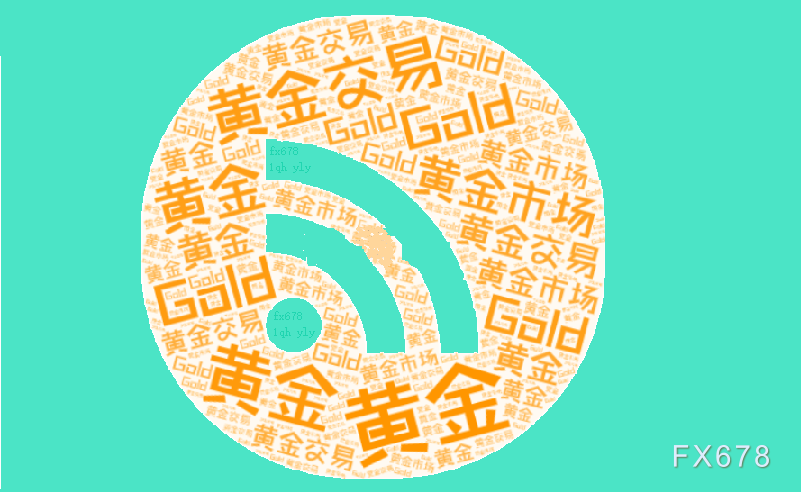CITIC Construction Investment Futures: US inflation is lower than expected, precious metals continue to fall
2025-10-27 11:21:34

Stock Index Futures: In the previous trading day, the Shanghai Composite Index rose 0.71%, the Shenzhen Component Index rose 2.02%, the ChiNext Index rose 3.57%, the STAR Market 50 Index rose 4.35%, the CSI 300 Index rose 1.18%, the SSE 50 Index rose 0.62%, the CSI 500 rose 1.62%, and the CSI 1000 Index rose 1.52%. Trading volume for the two markets totaled 1.974209 trillion yuan, an increase of approximately 330.3 billion yuan from the previous trading day. Among the Shenwan primary sectors, the best performing sectors were communications (4.73%), electronics (4.72%), and defense and military (2.34%). The worst performing sectors were petroleum and petrochemicals (-1.36%), coal (-1.29%), and food and beverages (-1.18%). Regarding basis, the IF basis weakened slightly, while the IH, IC, and IM basis strengthened slightly. The annualized basis rates for the quarterly IH and IF contracts are 0.30% and -3.00%, respectively; while those for the quarterly IC and IM contracts are -9.10% and -11.50%. For hedging purposes, quarterly contracts may be considered for short positions. Last week, the Sino-US trade situation improved somewhat, and the release of a new domestic economic plan helped to improve market sentiment. The Shanghai and Shenzhen stock markets generally saw a fluctuating upward trend, but trading volume contracted again compared to the previous week. Looking at the performance of primary sectors, previously popular sectors such as communications and electronics rebounded after a significant correction last week. Twenty-seven of the 30 CITIC primary sectors rose, contributing to a broad-based market rally. The Shanghai Composite Index reached a new 10-year high during the week. Although trading volume in both markets continued to decline this week, the basis rates for all four major index futures continued to strengthen, potentially indicating that the market has largely absorbed the panic caused by uncertainty, but overall wait-and-see sentiment remains strong. Last weekend, China-US trade negotiations made initial progress and are expected to gradually ease in the future. However, we still need to pay attention to the specific negotiation results to be released later. It is recommended to wait and see in terms of operations. If there are obvious signs of recovery in transaction volume, you can try to go long.
Stock Index Options: Last trading day, the Shanghai Composite Index rose 0.71%, the Shenzhen Component Index rose 2.02%, the ChiNext Index rose 3.57%, the STAR Market 50 Index rose 4.35%, the CSI 300 Index rose 1.18%, the SSE 50 Index rose 0.62%, the CSI 500 Index rose 1.62%, the CSI 1000 Index rose 1.52%, and the Shenzhen 100 ETF rose 2.03%. Trading volume for the two markets totaled 1.974209 trillion yuan, an increase of approximately 330.2 billion yuan from the previous trading day. Among the Shenwan First-Level Sectors, the best-performing sectors were Communications (4.73%), Electronics (4.72%), and Defense (2.34%). The worst-performing sectors were Food and Beverage (-1.18%), Coal (-1.29%), and Petroleum and Petrochemicals (-1.36%). Following the release of the 15th Five-Year Plan, market risk appetite significantly improved, leading to a rapid rebound in stock indices last Friday. In the medium to long term, supported by policy and funding, the A-share market is likely to continue its slow bull market. Furthermore, if further policy support is coupled with subsequent improvement in fundamentals, the stock index has ample room for upward movement. The market is likely to maintain a volatile upward trend over the long term. Currently, stock index futures are trading at a significant discount. During corrections, consider a covered call strategy involving long positions in stock index futures and selling out-of-the-money call options.
Treasury bond futures fell on Friday. Based on closing prices, the 30-year bond futures contract fell 0.25%, the 10-year contract fell 0.06%, the 5-year contract fell 0.05%, and the 2-year contract fell 0.01%. The yield on the most active 30-year bond rose 2 basis points to 2.2125%, the yield on the most active 10-year bond rose 1.2 basis points to 1.845%, and the yield on the most active 2-year bond fell 0.5 basis points to 1.49%. Inter-product spreads for futures contracts: 4TS-T, 2TF-T, and 3T-TL changed by 0.025 yuan, -0.035 yuan, and 0.095 yuan, respectively. Unilateral strategies: Bond futures continued to decline, with short-term bonds showing slight strength. Growing expectations of a bull market in equities dampened long-term bond sentiment. Looking ahead, we believe bond market pricing will return to fundamentals. With the quasi-deflationary landscape still intact, closely monitoring opportunities for long futures on dips is a key strategy for the near future. Regarding cross-product strategies, TL (T-bond) is showing resilience, recommending a short (TF) and long (TL) arbitrage strategy. Currently, arbitrage strategies outperform single-sided strategies. Regarding hedging strategies, the T-bond net basis is fluctuating at a low level, with overall levels remaining low. We recommend maintaining a long T-bond basis portfolio.
Industrial silicon futures fluctuated weakly last Friday, with market sentiment stable and no significant fundamental shifts. From a fundamental perspective, industrial silicon production runs remain at a year-to-date high, with the pace of increases in northern China gradually slowing, while in southern China, shutdowns are slowly increasing as the dry season approaches. Downstream market demand is stable in the short term, but potential polysilicon production cuts and silicone production reductions due to maintenance also dampen demand expectations. Overall, industrial silicon fundamentals remain relatively balanced, with supply and demand remaining relatively balanced. However, continued demand pressures remain, and the industrial silicon market remains under pressure. A light short position is recommended, with the SI2601 contract trading range at 8,600-9,100 yuan/ton.
Copper: Shanghai copper prices rose nearly 1% to 87,660 yuan last Friday evening, reaching a high of 87,970 yuan. London copper prices reached $10,950, yet have yet to reach $11,000. Macroeconomic conditions are bullish. US CPI rose 3% year-on-year in September, but below the expected 3.1%. The market has almost fully priced in the Federal Reserve's two remaining 25 basis point interest rate cuts for the year. Meanwhile, positive signals from the China-US tariff negotiations have further improved market sentiment, boosting copper prices. Fundamentals are neutral with a slight bias towards bullishness. Global copper inventories rose to 667,000 tons last week, with the Shanghai Futures Exchange seeing a slight reduction of 5,400 tons to 104,800 tons. Bonded copper inventories continued to accumulate by over 10,000 tons to 110,000 tons. LME copper inventories saw a slight reduction to 136,400 tons, while COMEX copper inventories continued to accumulate to 315,600 tons. Overall, macroeconomic factors such as the prospect of a geopolitical ceasefire, reduced tariff risks, domestic policy confidence, and room for US interest rate cuts, coupled with tight raw material supply constraints, are expected to keep copper prices volatile. Today's Shanghai copper price range is expected to be between 86,500 and 88,200 yuan/ton. Strategically, we maintain a medium- to long-term buy-low-and-hold strategy.
Ferroalloys: The market is facing short-term resistance, with ferrosilicon outperforming silicomanganese. Downstream procurement is primarily based on demand, with steel mills experiencing slight production cuts, but the volume is limited. The outcome of the US-China talks is likely to be positive, leading to a slight improvement in macroeconomic sentiment. Supply remains high, with significant inventory growth at silicomanganese mills, while ferrosilicon remains relatively normal. Ferrosilicon fundamentals remain stronger than silicomanganese. Cost support is generally strong, but hedging margins have improved with rising futures prices, and with ample production, selling interest may increase. Overall, while alloys are undervalued, upward momentum is lacking. Viewpoint: Hold a wait-and-see approach on the 01 futures contract and continue holding out-of-the-money put options on the 12 contract.
Nickel and Stainless Steel: On a macro level, China-US trade negotiations have progressed, with a basic consensus reached on arrangements to address mutual concerns, leading to an improvement in market sentiment. Currently, pure nickel spot market transactions are generally weak, and the nickel oversupply situation remains unresolved. Nickel ore prices remain firm, but downstream acceptance has weakened under negative feedback pressure. For ferronickel, negative feedback from stainless steel persists. For nickel sulfate, cost factors and downstream demand support strong nickel salt prices. Stainless steel market sentiment remains cautious, with expectations of a peak season dashed, and spot prices remain weak. Regarding nickel and stainless steel, trading is recommended within a range. The reference range for Shanghai Nickel 2512 is 118,000-126,000 yuan/ton. The reference range for SS2512 is 12,300-13,000 yuan/ton.
Authorized by CITIC Construction Investment Futures Co., Ltd. to be forwarded by "a professional market analysis information website focusing on domestic futures derivatives trading": [ http:// ]
- Risk Warning and Disclaimer
- The market involves risk, and trading may not be suitable for all investors. This article is for reference only and does not constitute personal investment advice, nor does it take into account certain users’ specific investment objectives, financial situation, or other needs. Any investment decisions made based on this information are at your own risk.





















